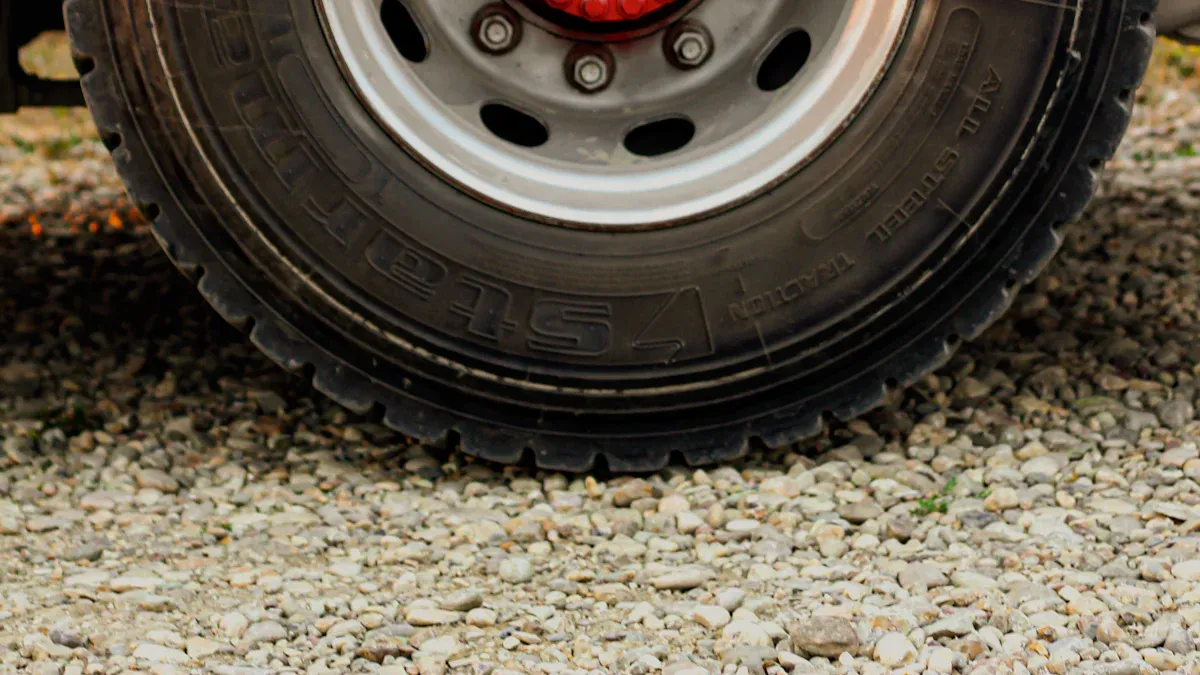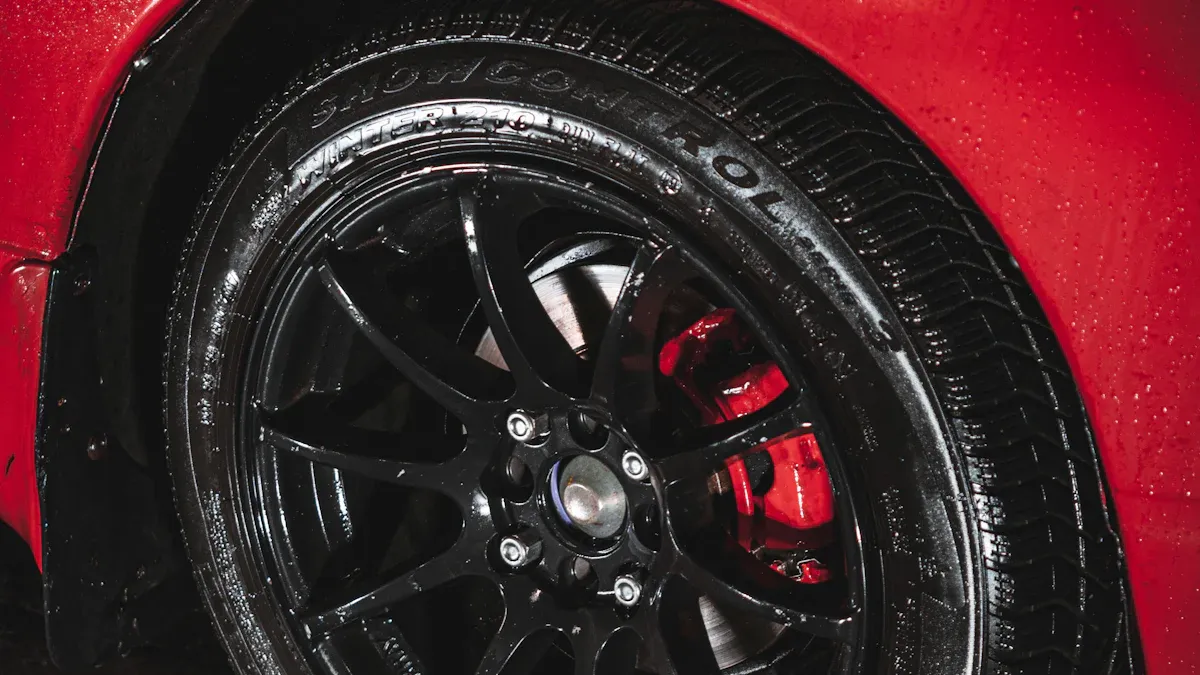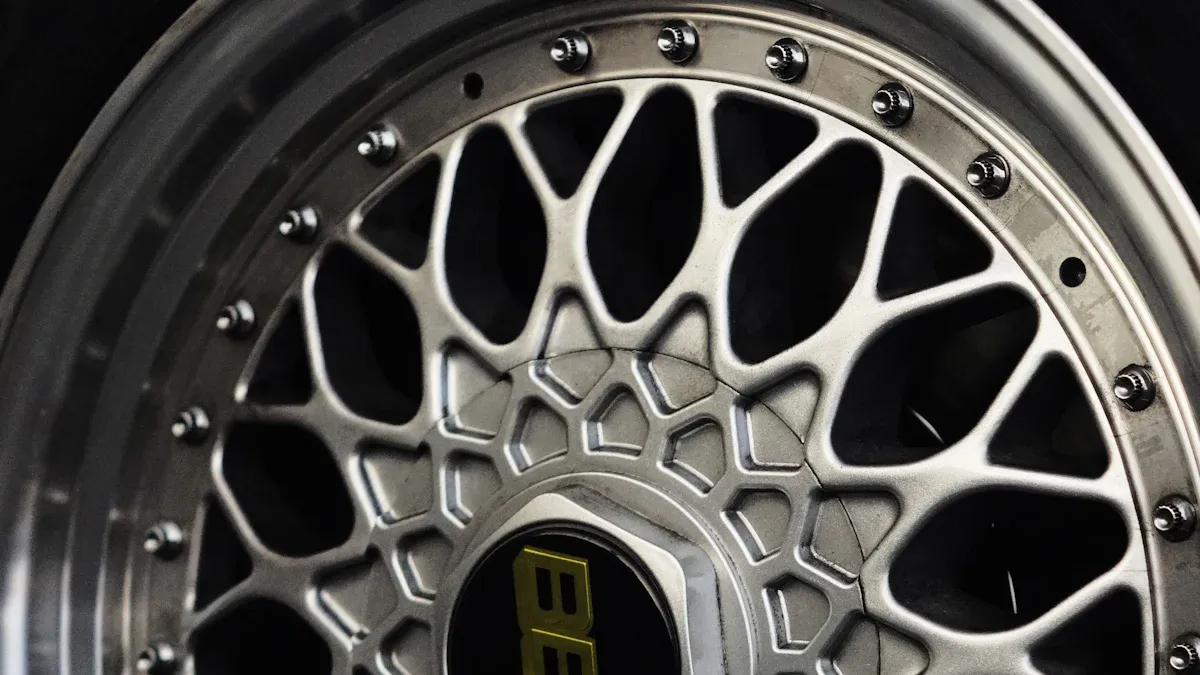
When winter hits, choosing the right winter rim for your car becomes crucial. Steel rims stand out for their durability and ability to handle snow and icy roads. They’re tough, affordable, and designed to withstand harsh winter conditions. On the other hand, aluminum rims offer a lightweight design and sleek appearance, but they may struggle in extreme weather. Factors like weight, cost, and performance play a big role in your decision. Steel provides strength and longevity, while aluminum delivers style and agility. Ultimately, your choice of winter rim depends on your driving needs and the winter conditions you face.
Steel Rims for Winter
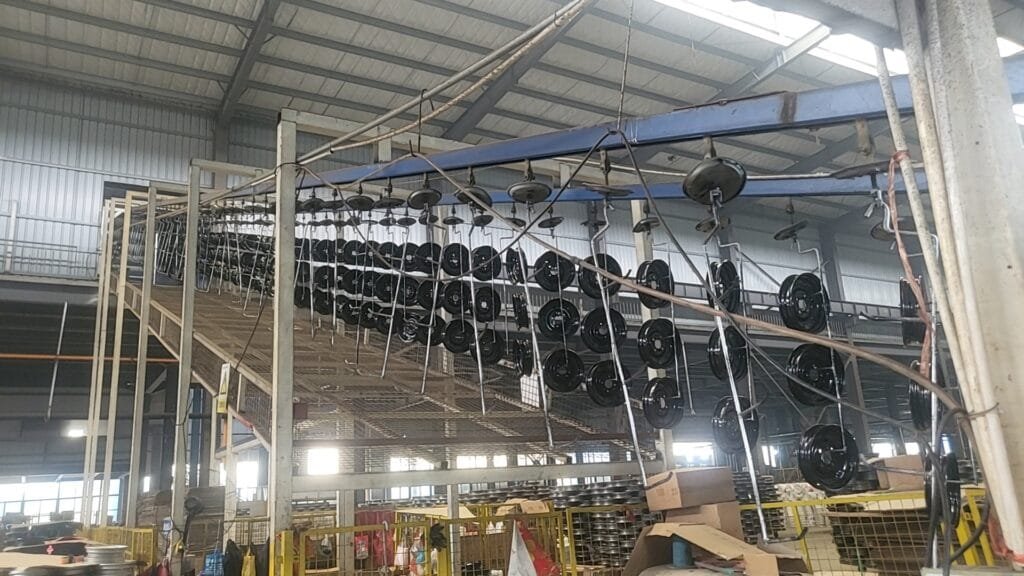
Advantages of Steel Rims
Durability in Winter Conditions
When it comes to winter driving, steel rims are a powerhouse of durability. You’ll find that they handle rough, icy roads with ease. Unlike aluminum rims, steel rims can take a beating from potholes and debris without cracking or bending. Their heavier weight also means they don’t need frequent balancing, which helps maintain stability during extreme winter conditions. Plus, steel’s natural strength makes it more resistant to corrosion caused by salt and other winter road elements. This durability ensures your rims stay reliable throughout the harshest winter months.
Cost-Effectiveness for Winter Use
If you’re looking for a budget-friendly option, steel rims are the way to go. They’re significantly more affordable than aluminum rims, making them an excellent choice for winter tires. Their cost-effectiveness doesn’t compromise quality either. Steel rims provide reliable performance without breaking the bank, which is perfect for drivers who want to save money while still preparing their car for winter.
Resistance to Salt and Debris
Winter roads are often covered in salt and debris, which can wreak havoc on your rims. Steel rims, however, are built to withstand prolonged exposure to salt. While untreated steel can rust, a simple protective coating or regular maintenance can keep them in great shape. This resistance makes steel rims a practical choice for winter driving, especially in areas where road salt is heavily used.
Disadvantages of Steel Rims
Heavier Weight and Its Impact
Steel rims are heavier than aluminum ones, which can affect your car’s performance. The added weight might lead to slower acceleration and slightly reduced fuel efficiency. However, this same weight improves traction on snowy roads, so it’s a trade-off worth considering.
Limited Aesthetic Options
If style matters to you, steel rims might not be your first choice. They typically come in plain designs that lack the sleek appeal of aluminum rims. For drivers who prioritize aesthetics, this could be a drawback.
Potential for Rust Without Maintenance
Steel rims are prone to rust if left untreated. Prolonged exposure to salt and moisture can accelerate corrosion. Regular cleaning and applying a protective coating can prevent this, but it’s something you’ll need to stay on top of.
When to Choose Steel Rims
Ideal for Harsh Winter Climates
Steel rims shine in harsh winter climates. Their durability and resistance to damage make them perfect for rough roads, heavy snow, and icy conditions. If you frequently drive in extreme winter weather, steel rims are a dependable choice.
Best for Budget-Conscious Drivers
For budget-conscious drivers, steel rims are a no-brainer. They’re affordable, durable, and easy to maintain. You get reliable performance without overspending, making them a smart investment for winter driving.
Aluminum Rims for Winter
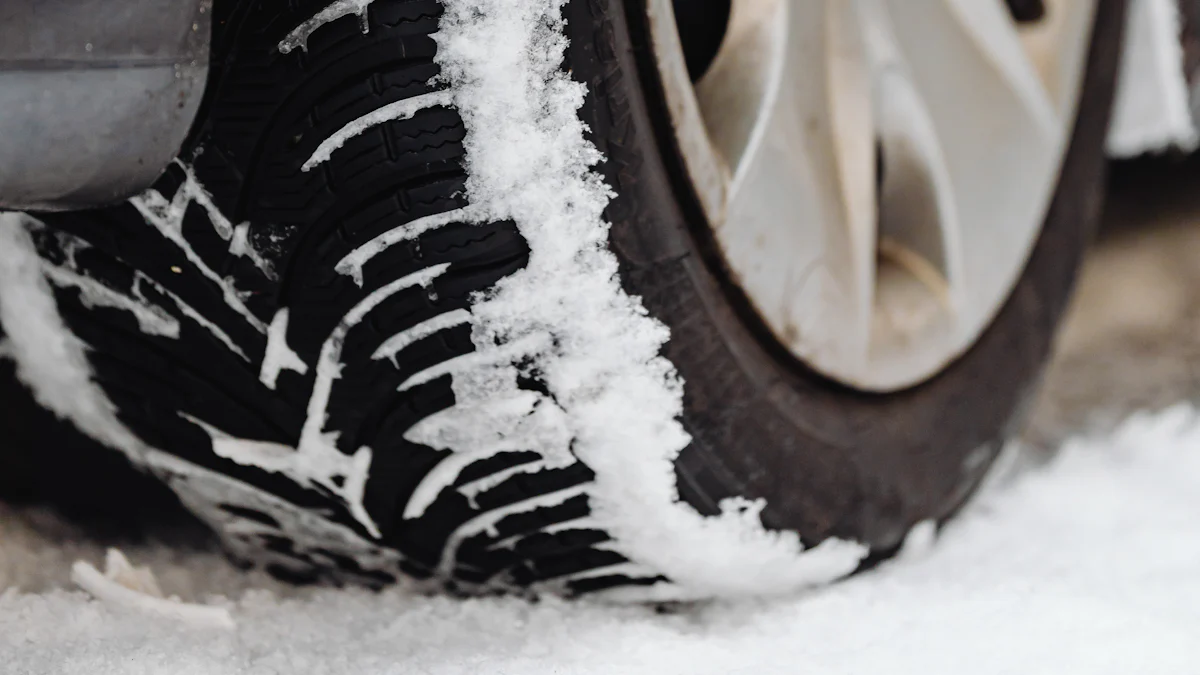
Advantages of Aluminum Rims
Lightweight Design for Better Handling
Aluminum rims are a great choice if you value better handling during winter months. Their lightweight design reduces the strain on your car’s suspension, which improves traction and control on icy or slippery roads. This makes driving smoother and more responsive, especially when paired with winter tires. Additionally, aluminum rims help with heat dissipation, which reduces brake wear in cold weather. This feature ensures your brakes stay reliable, even when temperatures drop.
Aesthetic Appeal and Customization
If style is a priority, aluminum rims are hard to beat. They come in a variety of designs and finishes, allowing you to customize your car’s look with custom steel wheels. Whether you prefer a sleek, modern appearance or something more unique, aluminum rims offer plenty of options. Unlike the utilitarian look of steel rims, aluminum rims enhance your vehicle’s overall aesthetic, making them a favorite among drivers who want their car to stand out.
Suitable for Mild Winter Conditions
For those living in urban areas with mild winters, aluminum rims are an excellent choice. They perform well in conditions where snow and ice are minimal. Their lightweight nature and stylish design make them ideal for city driving. Plus, their heat dissipation qualities help reduce wear and tear on your brakes, which is especially useful during stop-and-go traffic in colder weather.
Disadvantages of Aluminum Rims
Higher Cost Compared to Steel Rims
Aluminum rims tend to cost more than steel rims. While they offer style and performance, their higher price tag might not fit every budget. If you’re looking for a more affordable option for winter driving, steel rims might be a better fit.
Vulnerability to Corrosion from Salt
One downside of aluminum rims is their susceptibility to corrosion from salt. In areas where salt is heavily used to de-ice roads, prolonged exposure can lead to pitting on the rims. This not only affects their appearance but can also compromise their ability to hold air. Regular cleaning and maintenance are essential to keep them in good shape during winter months.
Less Durability in Severe Winter Conditions
Aluminum rims are less durable when faced with harsh winter conditions. They can easily get scratched, dented, or even cracked if they hit curbs or potholes. This makes them less suitable for areas with heavy snow or rough roads. If you frequently drive in severe winter weather, aluminum rims might not be the best choice.
When to Choose Aluminum Rims
Best for Urban Areas with Mild Winters
Aluminum rims shine in urban settings with mild winters. Their lightweight design and excellent heat dissipation make them perfect for city driving. They handle light snow and icy patches well, offering a balance of performance and style. If you don’t face extreme winter conditions, aluminum rims are a practical and stylish option.
Ideal for Drivers Prioritizing Style
If you care about how your car looks, aluminum rims are the way to go. They come in a wide range of designs and finishes, allowing you to match your personal style. Whether you want a sporty look or something more elegant, aluminum rims let you customize your vehicle to reflect your taste.
Key Factors to Consider for Winter Rims
Durability
Comparing Steel and Aluminum Rims in Winter
Durability is a critical factor when choosing winter rims. Steel rims excel in harsh winter conditions. Their robust construction allows them to handle rough roads, potholes, and icy terrain without cracking or bending. They’re also less prone to snow accumulation, which can improve your car’s performance during the winter months.
On the other hand, aluminum rims face more challenges in winter.
- They’re more susceptible to corrosion from road salt.
- Prolonged exposure to salt can cause pitting, which affects their ability to hold air.
- Their design, often with fewer spokes, can allow snow to accumulate, potentially impacting performance.
If you drive in areas with heavy snow and salt-treated roads, steel rims are the more durable choice.
Performance
How Rim Material Affects Winter Driving
The material of your rims plays a big role in how your car performs in winter. Steel rims are heavier, which can improve traction on snowy roads. Their durability makes them ideal for rough conditions, ensuring they stay intact even when faced with debris or potholes.
Aluminum rims, being lighter, offer better handling and fuel efficiency. This lightweight design can enhance braking and acceleration, especially in urban areas with mild winters. However, they may require protective coatings to resist corrosion from road salt. If you prioritize smooth handling and live in a city with light snow, aluminum rims might suit your needs better.
Here’s a quick comparison of performance trade-offs:
| Rim Type | Pros | Cons |
|---|---|---|
| Steel Rims | More durable, better for rough conditions, less snow accumulation | Heavier, less stylish, retains heat longer leading to brake wear |
| Aluminum Rims | Lightweight, modern appearance, excellent heat dissipation | More susceptible to corrosion from salt, easier for snow to accumulate |
Cost
Price Comparison of Steel vs Aluminum Rims
Cost is often a deciding factor when choosing winter rims. Steel rims are more affordable upfront, making them a great option for budget-conscious drivers. They’re also less expensive to replace, which adds to their appeal. However, they require regular maintenance, like cleaning and painting, to prevent rust. Neglecting this can increase long-term costs.
Aluminum rims, while pricier, offer a stylish and lightweight design. They may require additional investment in protective coatings to resist winter corrosion. If you’re willing to spend more for aesthetics and performance, aluminum rims could be worth the cost. For those looking to save money without sacrificing reliability, steel rims remain the better choice.
Maintenance
Maintenance Needs for Steel Rims
Steel rims are tough, but they still need some care during the winter months to stay in top shape. If you’re using steel rims, here’s what you should focus on:
- Corrosion prevention: Rust can creep in if you’re not careful. Sanding off any rust spots and applying anti-rust treatments can keep your rims looking good and performing well.
- Protective coatings: A layer of protective coating, whether permanent or temporary, shields your rims from harsh winter conditions.
- Frequent salt removal: Road salt is a major culprit for corrosion. Regularly washing your rims, especially after driving on salted roads, helps minimize damage.
- Moisture management: Parking in a sheltered area and drying your rims after exposure to snow or slush can reduce the risk of rust.
- Proper tire air pressure: Keeping your tires at the recommended pressure prevents unnecessary strain on your rims, ensuring they last longer.
Steel rims are easier to maintain than aluminum ones because of their durability. With a little effort, you can keep them in great condition all winter long.
Maintenance Needs for Aluminum Rims
Aluminum rims require more attention during winter. Their lightweight design and stylish appearance come with a trade-off: they’re more vulnerable to damage from salt and debris. Here’s how you can protect them:
- Regular cleaning: Salt and grime can cause pitting, which affects both the look and performance of your rims. Cleaning them often prevents this.
- Protective measures: Applying a sealant or wax can create a barrier against salt and moisture, reducing the risk of corrosion.
- Inspect for damage: Aluminum rims are more prone to scratches and dents. Check them regularly for any signs of wear and address issues promptly.
- Avoid prolonged exposure to salt: If possible, rinse your rims after driving on salted roads to prevent long-term damage.
While aluminum rims need more upkeep, their sleek design and performance benefits make the extra effort worthwhile, especially if you’re driving in milder winter conditions.
Tip: Whether you choose steel or aluminum rims, regular maintenance during winter months ensures they stay reliable and extend their lifespan.
When it comes to choosing the right winter rim, steel rims often take the lead. They’re durable, affordable, and handle harsh winter conditions like a pro. Their heavier weight improves traction on snowy roads, making them a reliable choice for tough climates. Aluminum rims, on the other hand, shine in milder winters. They’re lightweight, stylish, and offer better handling in urban settings. However, they require more maintenance to resist salt and snow buildup. Ultimately, your decision depends on what matters most to you—durability and cost or style and performance.
FAQ
What are the main differences between steel and aluminum rims for winter?
Steel rims are heavier and more durable, making them ideal for harsh winter conditions. Aluminum rims are lightweight and stylish but less durable and more susceptible to corrosion from road salt. Your choice depends on your driving environment and priorities.
Are steel rims more reliable for winter driving?
Yes, steel rims are reliable rims for winter. Their durability and resistance to damage make them perfect for rough roads and icy conditions. They handle snow and salt better than aluminum rims, ensuring dependable performance in extreme weather.
Can aluminum rims handle snowy roads?
Aluminum rims can handle light snow but struggle in heavy snow or icy conditions. Their lightweight design improves handling, but they’re more prone to damage and corrosion. If you live in an area with mild winters, aluminum rims might work for you.
How do I maintain my rims during winter?
For steel rims, clean off salt and apply a protective coating to prevent rust. For aluminum rims, wash them regularly and use a sealant to reduce corrosion. Regular inspections help catch damage early, keeping your rims in good shape.
Which rims are better for budget-conscious drivers?
Steel rims are the better choice for budget-conscious drivers. They’re affordable, durable, and require less maintenance. Aluminum rims cost more upfront and need extra care, which might not suit a tight budget.
- Posted In:General

